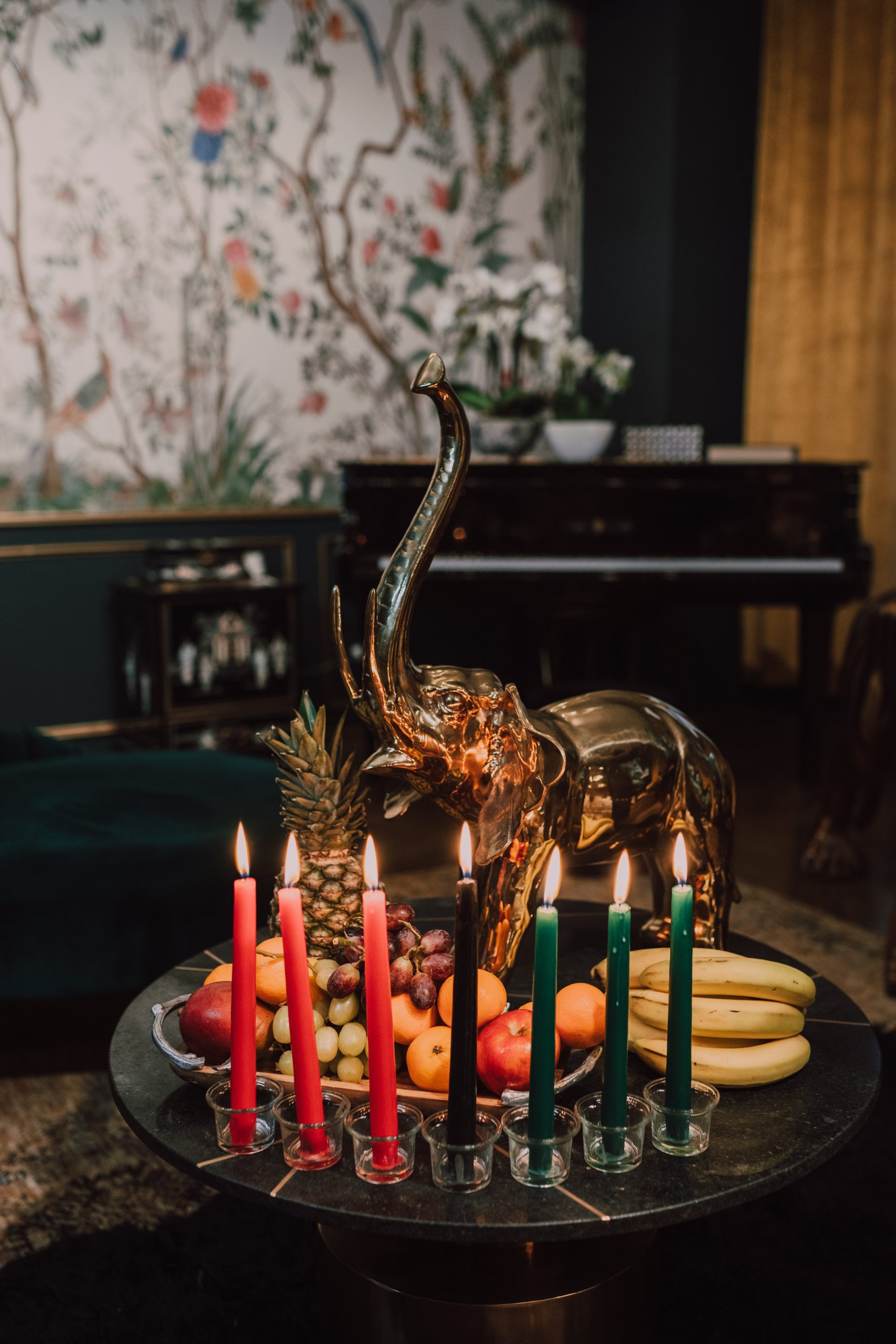



Joyous Kwanza to all!
2020 has shown such a light on the black experience in America. Highlighting injustices, with the murders of many African Americans, showcasing triumphs with the Black actors having the most wins at the Emmys, and enlightening the masses to the historical misdeeds that we as a people have endured. Subjects such as Jim Crow, Redlining, and the 3/5 Compromise being talked about by news outlets, authors, and on social media, it feels like the country is finally taking notice of the plight of Black Americans.
With such a tainted and tangled history in this country, many Black Americans have begun to look into their heritage, seeking connection to their roots. I am one of the many Black Americans that has taken the last few years to learn more African traditions, religions, and customs and hopefully teach them to my daughter.
One of the best ways my husband and I have decided to impart more African (or African American) traditions in our home is with Kwanza! Kwanza is a 7-day celebration that focuses on unity, family, and connection.
Kwanza was created in 1966 by Dr. Maluna K, a professor of African studies, in response to the racial tension and upheaval of the Watts riots in Los Angeles. He sought to give the Black community the chance to celebrate themselves and their history.
Kwanza is a Swahili word that translates to “First Fruits’; This ties into a feast that takes place during the celebration.
The celebration of Kwanza is organized in 7 principles, one for each day starting December 26th ending January 1st
Umoja: Unity
Kujichagulia: Self-Determination
Ujima: Collective Work and Responsibility
Ujamaa: Cooperative Economics
Nia: Purpose
Kuumba: Creativity
Imani: Faith
While celebrated in the Americas mainly, Kwanza has also been adopted by black Caribbean’s and others in the African diaspora.
Now that we’ve covered the origins, let’s get this party started!
First, you’ll need to gather a few items. A mat or Mkeka is what all the items will be placed on. Traditionally made from woven material, using a kente cloth print or printed fabric is fine. Similar to the Jewish manora, a kinara is used to hold 7 candles. 3 candles are red, to represent the blood that was shed and the blood that is shared, 3 green representing prosperity, and a single black candle that sits center to represent our people. Next, you’ll want to get yourself some Mazao (fruits and veggies representing the productive labor) to place in a bowl, an ear of corn (muhindi) for each child in the home (if there are no children in the home, a single ear will represent the children of the community) a unity cup (Kikombe cha umoja) filled with juice, water or wine to be shared and gifts! (zawadi) Kwanza gifts can be small or big and are usually educational or tied to heritage.
Now Twende! (Swahili for “lets go”)
To Begin, the oldest person in the home will greet everyone with the Swahili phrase ‘Habari Gani?’ meaning “What’s the news?” Those gathered would respond with that day’s principal. Umoja on the first day, Kujichagulia on the second day, and so on.
On the first day, the center black candle is lit. The word of the day and its correlating meaning is what the family will discuss as they share food, drink from the unity cup, recall memories, and discuss dreams for their community.
For the rest of the week, the process goes the same with the candles going in this order.
The black, center candle is lit first and then it alternates between the red and green candles starting with the ones on the outside and moving inwards.
On the 6th day, New Year’s Eve is when we have the feast! Traditionally the meal was made with African foods like rice, beans, or peanut soups but over the decades, as the holiday entered the African-American mainstream, African foods got less emphasis, and people turned to more familiar foods.
Catfish, collards, and macaroni and cheese all began showing up on Kwanzaa tables, as did jerk chicken, gumbo, and plantains. I see this mix of old and familiar foods as a beautiful showcase of how far the African diaspora spreads.
Along with the feast, many families will dance, drum, sing and wear African prints and headdresses or bright colors. On the last day, January 1st, the Kinara is lit in order, greetings and poems are shared and gifts are exchanged from parents to children.
With such rich symbolism and ties to a people that have endured and overcome, Kwanza is a wonderful way to practice and focus on your community and your family. No matter your race, background, or ethnicity, you can celebrate Kwanza! Remember, without traditions, we don’t have a culture so take these principles of unity, purpose, and faith into this new year.
Mpaka Wakati Ujao! (until next time!)









